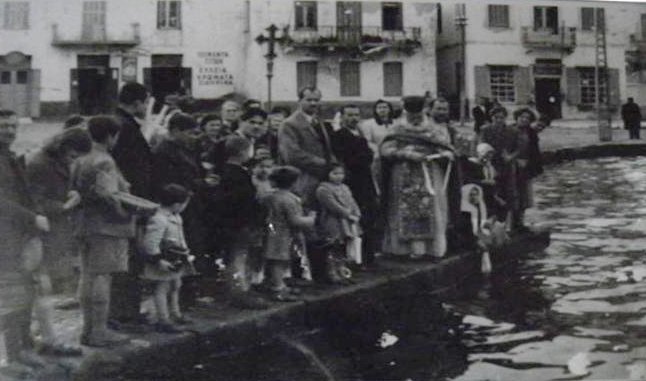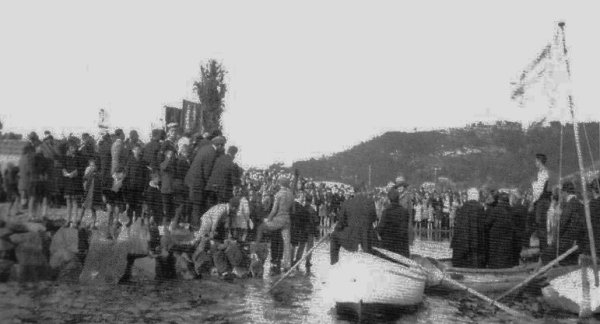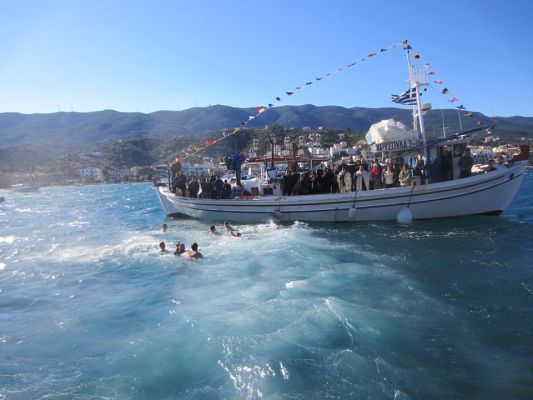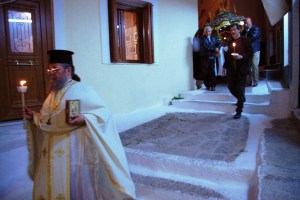
The winter holiday season closes with the Theofaneia or Epiphany on January 6 and, as the traditional carol notes, it’s back to normal life the day after, which is the feast of Saint John.
Folklorist and writer Yannis Poulakis notes that Epiphany, as a formal religious observance, predates Christmas as it celebrates the baptism of Jesus in the River Jordan by St John the Baptist or Ayios Ioannis Prodromos.
Shortly after he turned thirty, Jesus sought out St John the Baptist,
son of Zachary and Elisabeth, and six months his senior. John was living in the desert, performing repentance baptisms in the River Jordan and was surprised to see Jesus coming to be baptized.
Epiphany is known as the blessing of the waters but also as the “day of lights” because it celebrates the revelation of Jesus Christ as the human form of the God the Son. Tradition has it that on this day, the sky is blue, the sea becalmed, the winds are tamed, and hearts are filled with serenity. In keeping with these traditions, sailors wouldn’t start journeys until after the waters were blessed.
Theofaneia is observed with a beautiful ritual that begins with a dawn church service. Poulakis reminds that the services were held at such an early hour so that the priests would have enough time to bless the homes in their parishes with holy water before the formal Agiasmos—a blessing conducted by the sprinkling of holy water which has been consecrated on the eve of Epiphany inside the church. Priests on Poros could be seen going to homes and shops to conduct the blessing: the ritual involved holding a cross high and chanting, sprinkling holy water using stalks of basil, then making the sign of the cross with a censer as he moved from room to room, repeating the process each time. The agiasmos rid the home from the mischievous spirits who had descended to earth for the holidays. As the priest moved through the town blessing each home and business, the children also went caroling, chanting “today is the celebration of the lights” to the clanging of metal triangles.
But the most spectacular and poignant part of the observance is held outdoors, by the sea. After church services, the priest and his parishioners walk in procession to the waterfront, which is decorated with flags, palm branches, and myrtle leaves, for the tossing of the Epiphany Cross. Many years ago, this ceremony was held at Kanali, the narrow canal linking the two islands that form Poros; today, it is held by Kolona, the war memorial column on the main waterfront.
While waiting for the procession to arrive from church, fishing boats form a small semi-circle off the quay. Young celebrants are aboard these boats waiting to dive for the cross. Arriving, the priest mounts a small platform set up on the quay and, with church bells ringing loudly in the background, chant “in Jordan you were baptized” as he tosses the cross into the sea. The cross, which is attached to a white ribbon, and is tossed in two more times as the chanting continues. On the third toss, the priest throws the cross in with the ribbon as a white dove is released overhead. This is the sign for the celebrants to dive off the boats for the cross. The diver who retrieves it is believed to be especially blessed in the coming year.
Diane Shugart








